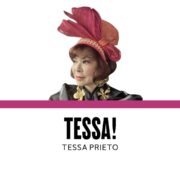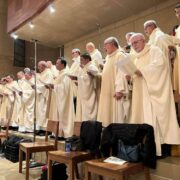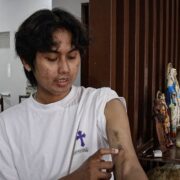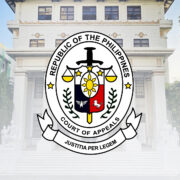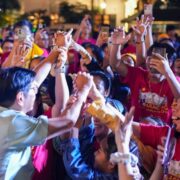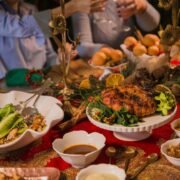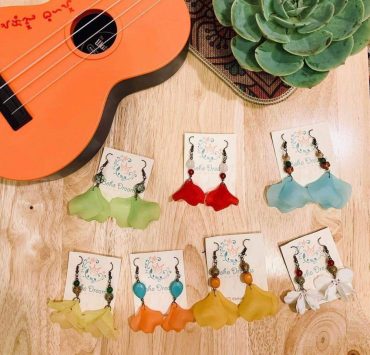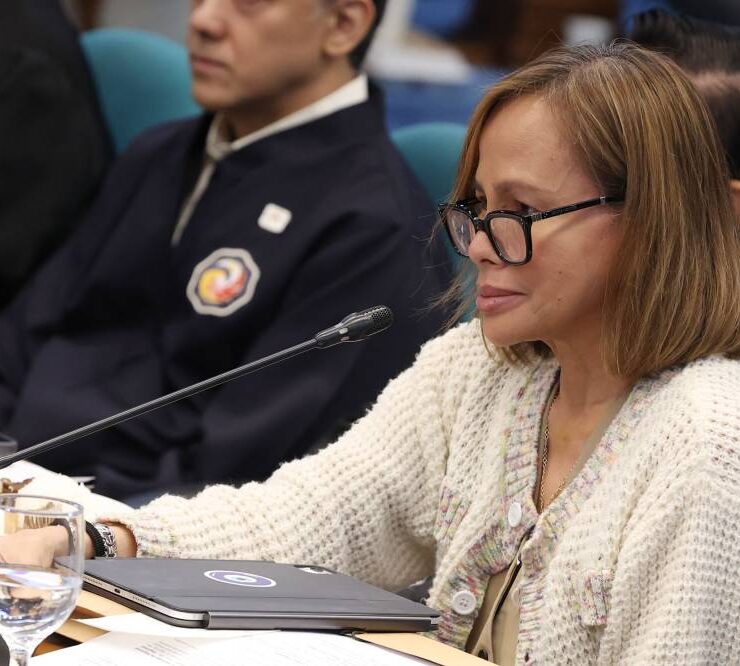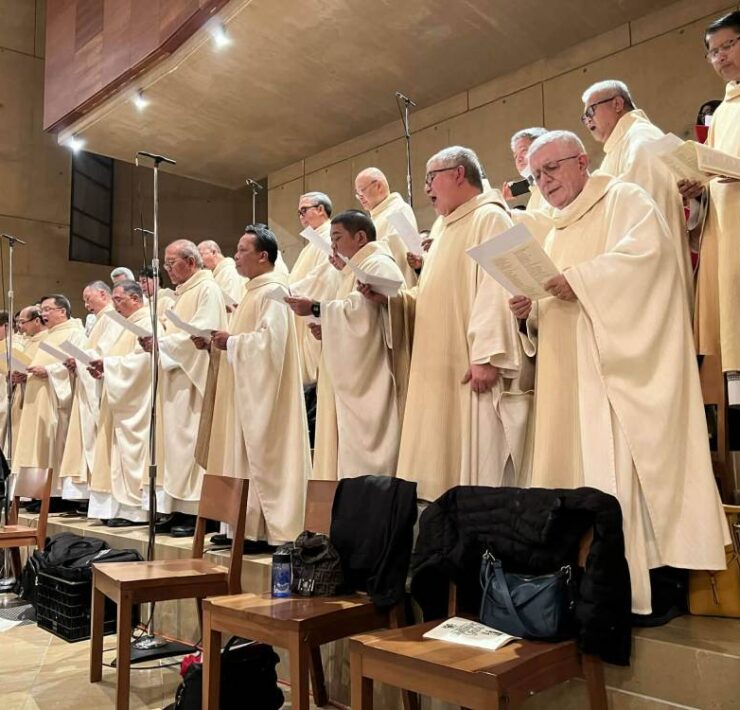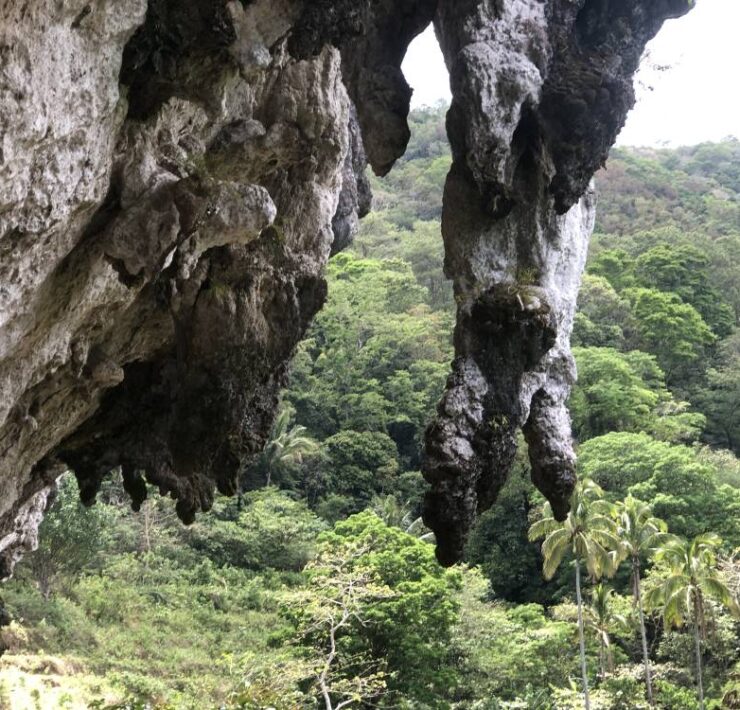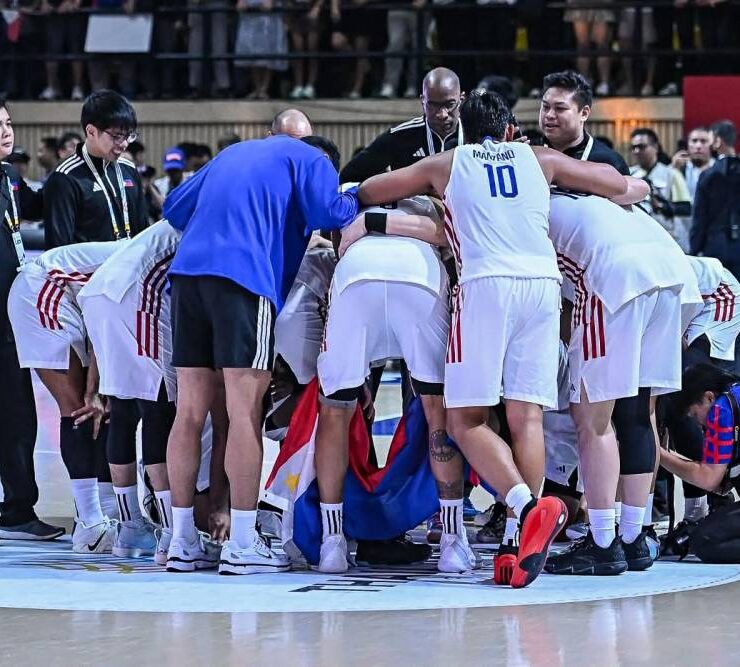‘Kagayakan’: High fashion as high art
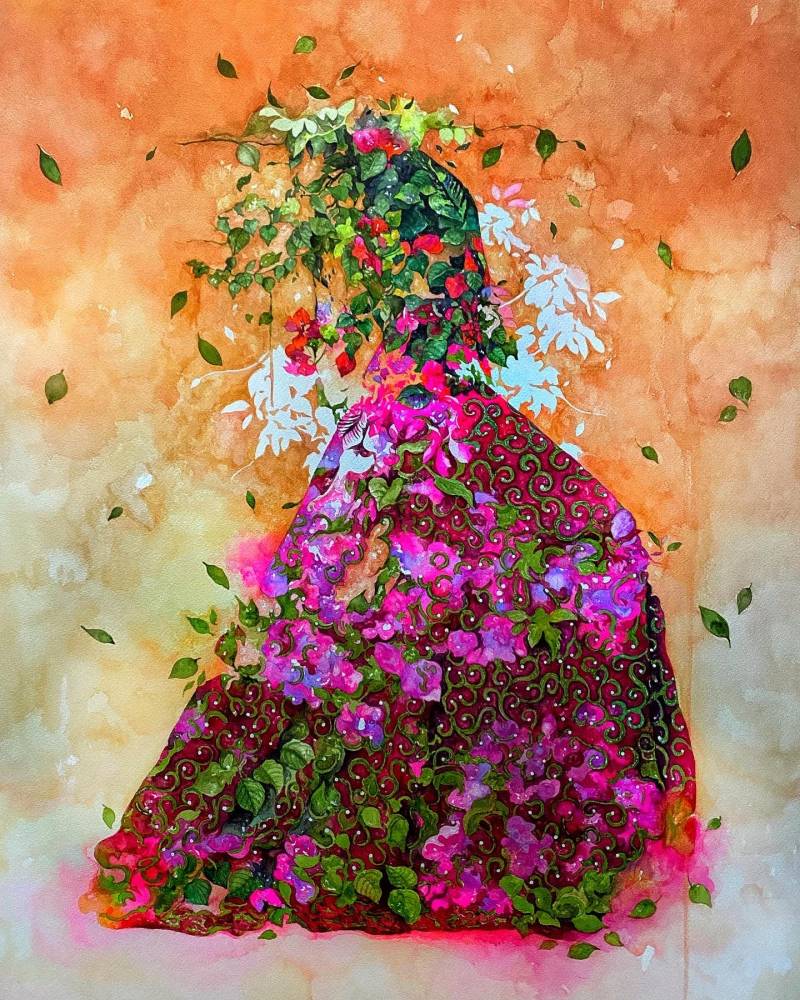
The Philippine visual arts scene is Southeast Asia’s most swinging and perhaps most lucrative, with art galleries enjoying brisk sales and works fetching fabulous prices at international auctions. The excitement in the art industry is similar to that of the Karilagan international fashion tours in the 1960s, which made Philippine haute couture the rage in the United States and some European capitals.
Back in 1962, Luis Araneta organized the first US tour of the Karilagan, which meant “acme of elegance”; it introduced Ramon Valera’s terno coat. Conchita Sunico organized the next editions, which saw capacity US crowds enjoying the creations of Ben Farrales, Pitoy Moreno, Aureo Alonzo, Christian Espiritu and Roy Gonzales, who would later become creative director of Jean Patou.
US Paradise Magazine reported that the Karilagan roadshow presented “a whole nouvelle vague, a new wave of high fashion,” “a wellspring of haute couture” from the Philippines. It took note of the ornamentation, accessories and other elements that now distinguish Philippine fashion: “Embroidery and handwoven cloth abound—but none of it is peasantry … sportswear is highly sophisticated, [leaning] on Oriental themes … late afternoon and evening clothes recall the years of Spanish influence … [they] glitter with bugle beads, sequins and jewels.”
Philippine high fashion nearly made it as export industry, but because of a weak textile industry, the inability of artisanal weaving communities to make the big leap to industrialization and poor productivity, it lost steam.
Thankfully, Philippine fashion design has continued to thrive. Heritage looms continued to be woven in the regions, providing designers the clothWWW.INQUIRER.NET ing material around which they can weave their dream design concepts. Weaving traditions have received state assistance to ensure their perpetuity. Fashion schools have sprouted.
Lately, too, Art Philippines has found in Fashion Philippines another muse with which to fuel its creative energy and foster new artistic idioms.
Opening at Art Anton at Conrad Hotel, Pasay City, on April 5 is “Kagayakan,” featuring the fashion-inspired paintings of Jane Ebarle, Edgar San Diego and Monie Domer. (It runs until April 24.)
The exhibit weaves heritage fashion and contemporary artistry together. Inspired by the timeless elegance of traditional attire, the artists seek to mine the riches of Philippine fashion patrimony and update them for appreciation by the next generations.




Woman’s imagination
Ebarle and San Diego were contemporaries at the University of Santo Tomas (UST) where they took up fine arts in advertising. Ebarle was longtime marketing head in the Philippines of Faber-Castell, the German brand of art supplies and writing instruments, till she retired to go back to her original love, painting.
Fascinated by indigenous yarns, Ebarle interpreted their geometric patterns and other intriguing elements in acrylic abstracts pulsating with grace and colors. The result was her acclaimed “Hibla” series.
She has employed the same approach in her subsequent works that underscore her deepening exploration of women’s creative psyche.
Since indigenous fabrics are crafted by women, Ebarle has always sought to translate in her canvases the loops, twists, and spins of a woman’s imagination—her spiritual adventures—into tangible manifestations, each loom reflecting the audacious creativity of women.
In 2014, the National Gallery of Fine Arts commissioned Ebarle to do paintings along the “Hibla” series celebrating indigenous weaving traditions.
In 2017, she was commissioned to do 25 paintings that were given to the heads of states attending the 31st Association of Southeast Asian Nations Summit in Manila in November that year.
For “Kagayakan,” Ebarle will exhibit her series “Kawes” (Pangasinan word for clothing), depicting Filipiniana costumes sans mannequins, suspended like ethereal spirits weaving colorful magic around.
What set these works apart, besides Ebarle’s vibrant colors, are their distilled silhouette, refined costumery and intricate detailing.
The fashion designer as a painter
More known as a fashion designer than painter, San Diego was raised in a family of dressmakers.
Even as a UST fine arts student, San Diego was already painting on jersey and georgette gowns for Junjun Cambe and Kiko Rodriguez.
After graduating in 1981, he joined the fashion industry, becoming founding member of the Fashion Designers Association of the Philippines, and later its president for three terms.
A slightly older UST fine arts contemporary, Gabriel Barredo, introduced San Diego to his aunt, theater icon Baby Barredo, who asked him do the costumes for several productions of Repertory Philippines. He likewise did costumes for Trumpets and in 2014, for the Manila production of “Priscilla, Queen of the Desert.”
The protracted COVID-19 lockdown saw fashion shops nearly collapsing. San Diego turned to painting, although continuing to serve clients, particularly overseas Filipinas seeking traditional dresses.
San Diego is a romanticist and aficionado of Filipino culture, so in his acrylic life paintings, he did women figures in Filipiniana across various historical periods. They were collected in his exhibit, “Baro’t Saya, Tuwa’t Ligaya,” mounted at SM Fashion Hall and acclaimed by critics and collectors.
The literal English of kagayakan is “ornamentation,” so San Diego has done in acrylic-on-canvas depicting various Filipiniana trajes or attires with their graphic prints—their ornamentation as it were—drawn from Philippine flora and fauna.
“Traje de Mais” shows a scarecrow as mannequin for an amber gown with butterfly sleeves and a skirt printed with magnified corn grains stacked on top of each other. At its foot are a hen and its brood of chicks, behind is the corn field.
“Traje de Mangga” may be called “tropical pastorale”: a native dress with yellow mango prints with leaves hangs under a mango tree flushed with green mango fruits. Leaning on the tree is a dainty yellow umbrella and at its foot are a pair of native clogs and a bench with a basket of ripe mangoes.
Intriguing but potentially blasphemous is the composition of “Traje de Pakwan”: a Hispanic-inspired gown in watermelon-green with a skirt that has a split in the middle, opened up to reveal the print inside—the watermelon fruit complete with seeds. Since the gown is set against an outdoor Marian shrine, the head of the icon seems to rise from the gown: the Virgin Mary appears wearing it in fact.
Pakwan is also Tagalog slang for copulation, the local equivalent of the English “cucumber patch.” So “Traje de Pakwan” with the Virgin seeming to wear the watermelon split-skirt is playful, to say the least. Shades of Georgia O’ Keefe.
Gayak accessories in the other paintings include the abanico fan while flora-and-fauna complements include carabaos, rice bird, gumamela flower and the Philippine passerine pipit bird.
Paean to women
Domer is a 2008 magna cum laude graduate of fine arts at the College of the Holy Spirit (a teacher was Romeo Gutierrez). She has done graphic art and illustration for Nestle Philippines, Department of Health, STI College and Manels.
A fast-rising contemporary artist, Domer will show her works in “watercolor portraiture” and in “doodle typography.”
The works in watercolor and ink on Arches paper show the gowns with their floral prints organically growing from the actual vegetation itself, evoking a lushness of colors and lines.
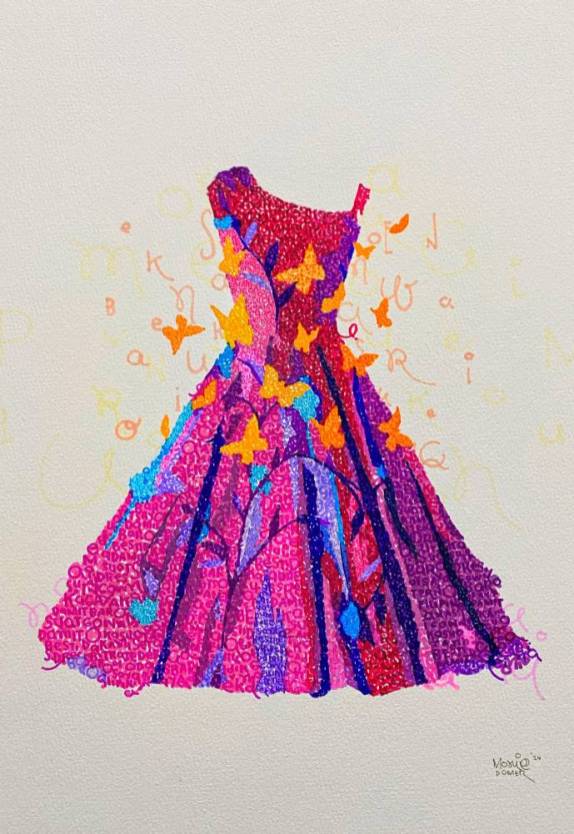
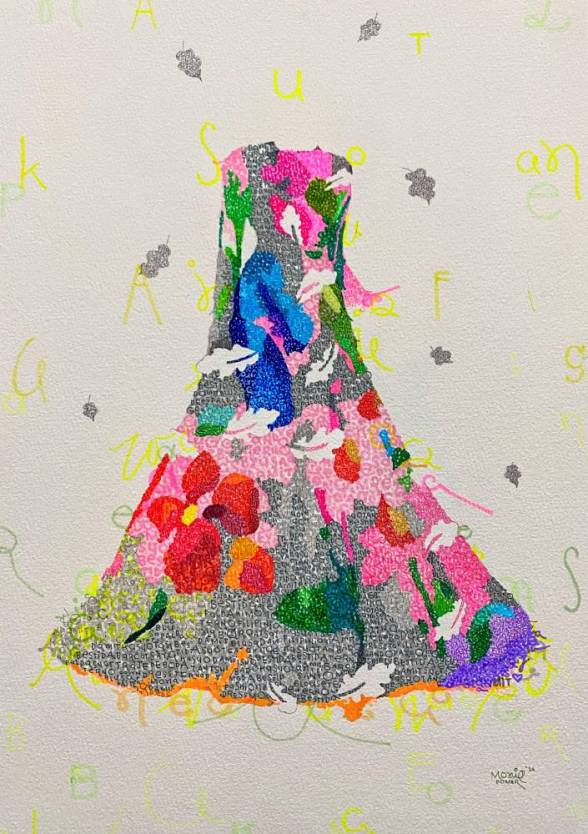


“The Huntress Bride” is Domer’s paean to women’s self-discovery and -empowerment, which is attained via “the hunting process.”
“What makes the countless huntings bearable is the fact that you are getting stronger every single day,” she said.
The painting, she added, puts the Filipina “out into the wilderness,” where she learns “to open her ears, sharpen her claws, make her legs run faster.”
Her aquarelle works are charged with surreal energy and thriving exuberance.
Domer’s works in doodle typography are likewise fascinating. The life-figures are attired in brilliantly colored and richly detailed gowns that upon closer look are actually letters in various fonts, forming words related to clothing such as kasuotan, bestida, palda.
Domer’s fascination with pens, markers and the rich spectrum of colors they offer, serves as catalyst for her doodle typography. The style enables her to blend various fonts and font styles with freeform doodles to craft lifelike portraits of her subjects.
A section of the exhibit will show collaborative works of the three artists, and in these, Domer employed acrylic. Nearly two generations younger than Ebarle and San Diego, she shows the versatility and the rich promise that ensures the future of Art Philippines and Fashion Philippines are in good hands.

